Plant-Insect Tagteams and Boosting Fat for Weight Control
This week we hear how ants and plants are combining forces to help each other survive, how monkeys are cheekily planning for their future and how boosting brown fat in the body can help control our weight. We also investigate the matchmaking process of cells during meiosis, how the pathology of a virus could be predicted by analysing proteins in cells and how dinosaurs could have warmed the earth...with their flatulence!
In this episode

00:18 - Carnivorous plants team up with ants and share spoils
Carnivorous plants team up with ants and share spoils
Scientists have discovered the first example of an ant-plant tag-team that works together to provide food for  both.
both.
The plant is a member of the Nepenthes family, which characteristically use liquid-filled pitchers to trap and digest insects that tumble in. And as these unfortunates are consumed, the nutrients locked up inside them are absorbed, enabling the plants to thrive in impoverished soils.
But one species found in the rainforest of Borneo, Nepenthes bicalarata, appears to have taken things a step further. It recruits an army of (Camponotus schmitzi) ants that help to defend the plant, ambush prey, clean up the pitcher traps and, we now know, share in the food spoils.
The plant provides barracks for its resident defense force in the form of hollow structures called dormatia that are sited close to the pitchers. The ants are also rewarded with a sugar meal dispensed from "field kitchen" nectaries within the pitchers.
In return, the ants ambush passing insects, including other ant species, clean away fungal deposits from the necks of the pitchers to keep them slippery and fight off herbivores trying to make a meal of the plant itself.
What's really surprising though, is that the C. schmitzi ants, which appear to be uniquely associated with this pitcher species, also eat the nitrogen-rich prey that tumbles into the trap.
This sounds like bad news for the plant, but by doing so, and then contributing their own faeces and carcasses into the pitchers, the ants are effectively substituting their own superior digestive systems for the plant's less-effective one, dramatically improving the efficiency of nutrient release from the prey items.
At the same time, by retrieving bulky prey items from the traps, the ants also help to prevent a build up in the pitcher fluid of ammonia and other putrefaction products that could knock out the bacterial communities that also live there and help in the food-breakdown process.
This discovery, which is the work of University of Montpellier II researcher Vincent Bazile and his colleagues and published this week in the journal PLoS One, is the first description of a carnivorous plant and ant species working together in this way.
The team compared the growth, nitrogen content and trapping success of Nepenthes bicalcarata plants with and without ant colonisers. The results were clear: plants colonised by the ants had signficantly larger leaves and bigger pitchers containing twice as much prey biomass. Nitrogen levels in the plant were also three times greater in ant-colonised specimens, with up to 75% of it coming via the ants.
According to the researchers, "this mixed strategy represents an outstanding adaptation for the exploitation of nutrient-poor soils and is, to our knowledge, unique in the plant kingdom."
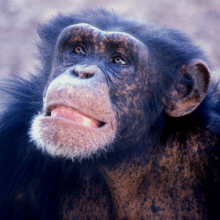
03:59 - Cheeky Monkey
Cheeky Monkey
We tend to think that planning ahead is a purely human activity, but the antics of a chimp called Santino in Furuvik Zoo in Sweden are challenging that assumption. three years ago Santino hit the headlines when researchers found that he was gathering stones into piles before the zoo opened in 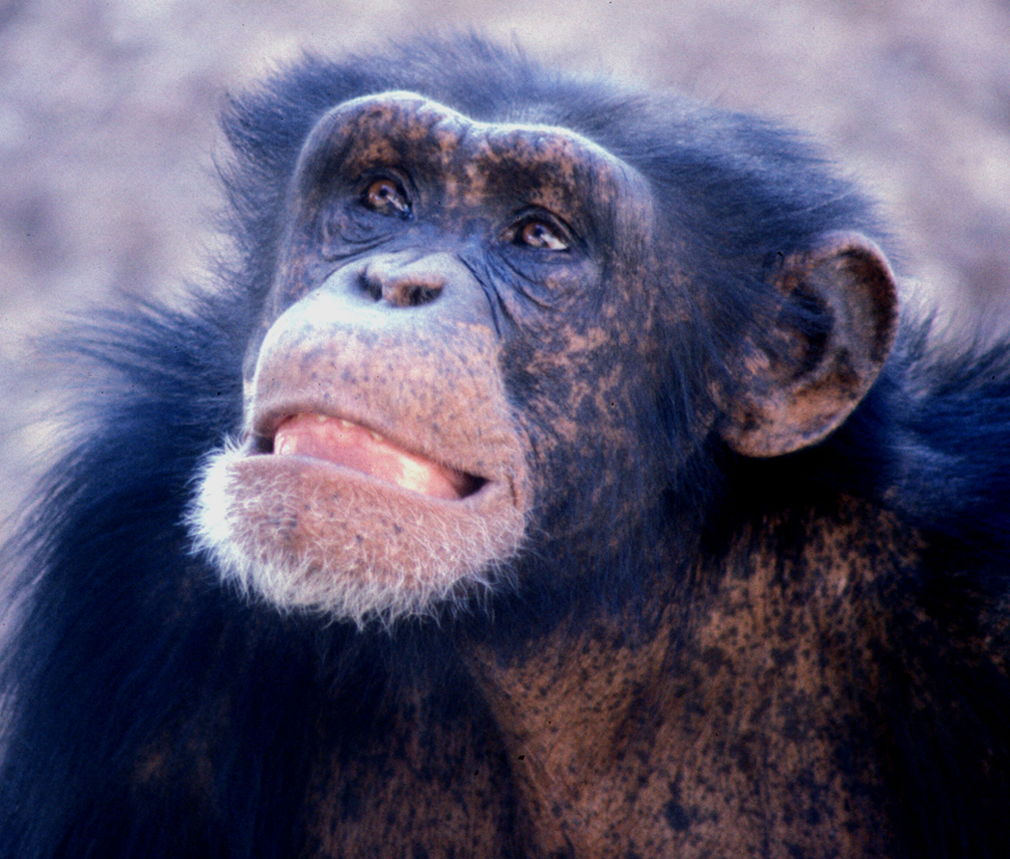 the morning, ready to pelt visitors. Not only is this rather cheeky, but it looked like he was actively planning ahead for the day's assaults.
the morning, ready to pelt visitors. Not only is this rather cheeky, but it looked like he was actively planning ahead for the day's assaults.
Some scientists argued that Santino wasn't actually planning ahead, but instead was just repeating what he had learned to do, as a result of his time in the zoo. But now new observations from Mathias Osvath and Elin Karvonen, published in the journal PLoS One this week, suggest that Santino is indeed a forward-planning, as well as a cheeky, monkey - or rather, chimp, before any pedants complain.
The researchers watched groups of visitors to Santino's enclosure, and saw him threatening them with stones. Understandably, they backed off, but when they went closer again, Santino was holding stones but just playing it cool, doing his chimp thing. But then he suddenly threw a stone at the visitor group, as if he had been planning to trick them.
Osvath and Karvonen also saw Santino hide stones under handfuls of hay or behind logs in prime spots for throwing, so visitors wouldn't spot the missiles as they approached - suggesting that he knew visitors would come and was planning to attack them.
The scientists argue that Santino didn't hide stones like this before 2010, and that it shows that he is forward-planning. Sceptics still aren't entirely convinced, arguing that it's hard to interpret his behaviour to this degree, that he might be hiding the stones for another reason, and that he's just one chimp that may not be representative of the rest of the species. So while these observations hint at the fact that at least one chimp out there may be planning for the future, there's a lot more work to be done to figure out whether chimps - or any other animals - can actively plan ahead. Though even if they can, they're unlikely to be buying into a pension plan any time soon.
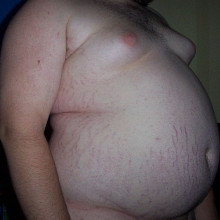
06:53 - Boosting Brown Fat for Weight Control
Boosting Brown Fat for Weight Control
Andrew Whittle, Institute of Metabolic Science, Cambridge
This week, scientists at Cambridge University have identified a signal that controls the activity of brown fat - that's a special kind of adipose tissue that's used to generate heat in the body by burning calories, and it's thought that boosting the activity of this brown fat could help people to lose weight. So people think it could be a very important therapeutic target.
Dr. Andrew Whittle is from the Metabolic Research Laboratory at Cambridge University and he's with us to tell us about this piece of work, published this week in the journal Cell.
Chris - So fats aren't all made equal then? We're not just one blob of adipose? There are different types of fat that do different jobs.
Andrew - There's definitely not just one type of fat, no. And we've known for a long time that in small children, small babies, and also small animals like mice, you have this other type of fat which isn't the white fat that stores all the fat. But instead, it looks brown in appearance because it has lots of these mitochondria, the powerhouses of the cell. And it was thought for a long time this wasn't present in adult humans. But research over recent years - thanks to new imaging techniques - allowed us to find and locate active depots of this brown fat in adult humans as well.
Chris - And where do you find it?
Andrew - Very much in a similar location to where you find it in small animals. So, around the shoulder blade areas, behind the collar bone, in the bottom of the neck.
Chris - And its role is chiefly to burn energy in order to make you feel hot?
Andrew - Yeah, I would say the prime reason that brown adipose tissue exists is that it's evolved to help maintain cold body temperature. So, as mammals, we depend on maintaining that temperature to function properly and this tissue helps animals to do that.
 Chris - And if it burns calories of course, it's another way of getting rid of excess energy and one of the things that we're very good at, although looking at the population these days, you could be fooled into thinking we're not. Actually, we're very good at regulating body mass, aren't we because despite in some cases, eating huge amounts of excessive food and then the next day eating too little, we keep our weight - despite these dramatic changes - really quite stable. Is it because it gets dumped into this brown fat and the excess calories do get burned off and you just turn them into waste heat?
Chris - And if it burns calories of course, it's another way of getting rid of excess energy and one of the things that we're very good at, although looking at the population these days, you could be fooled into thinking we're not. Actually, we're very good at regulating body mass, aren't we because despite in some cases, eating huge amounts of excessive food and then the next day eating too little, we keep our weight - despite these dramatic changes - really quite stable. Is it because it gets dumped into this brown fat and the excess calories do get burned off and you just turn them into waste heat?
Andrew - It's possible, but I think we don't have the evidence to suggest exactly how brown fat is regulated in that kind of way in humans in terms of its acute regulation but it's a potential that some of those calories are being burned in brown fat. Certainly, in animals like in mouse models, we know that you can stimulate the brown fat more if you feed a high calorie diet, so it does respond to that.
Chris - And you've found a signal that enables you to manipulate the activity of that fat - how metabolically active it is, how many calories it is burning off.
Andrew - Yes, so basically, the protein we identified and it seems to prime the brown fat to be able to respond better to the traditional nervous activation of the tissue. So, when you take this protein away, the brown fat is less able to burn calories to activate itself to make heat.
Chris - So under normal circumstances, the signal comes from the brain via nerve cells into the brown fat and tells it, "Right now, you have to ramp up your metabolic rate" and there's an additional cue which is the one you found?
Andrew - We think this protein is sort of a mechanism to enhance the impact of heat production. So, when you have prolonged exposure to a cold environment or that the body senses, or the brain senses, that you're eating a much higher calorie diet, in order to get even more heat out of the brown adipose tissue, it starts to make this protein, this bone morphogenetic protein 8b which is the one we found or BMP 8b. And that enables the tissue to respond to a greater extent to the same level of nervous stimulation.
Chris - Where does that signal come from? Does it come from the brain and go in the bloodstream or does it come out of nerve cells or a combination of the two?
Andrew - The BMP 8b signal is made by the brown fat itself. In fact, one of the very interesting things we found in the paper is that BMP 8b is very specific in terms of where it's made. So, it's only really made in the brown fat and we found some in the brain as well. It was present in the brain. We went in to look at that and also, the only other place we really detected meaningful amounts was in the testis.
Chris - Wow! So does that explain then why women tend to gain more weight that men? If you look in the population, you do find that a higher fraction of women who tend to put on a bit more weight - because I mean, it benefits them to do so from a child rearing point of view, doesn't it?
Andrew - Yeah, I mean, whether that's because they don't have as much BMP 8b because they don't have it being produced in the testis, whether that's the reason, I doubt it very much. I think there's many more differences about women that may drive that difference in the weight gain phenotype if you like.
Chris - But the BMP 8b, would that come out of the testis or the brain, or other tissues and make its way in the blood to the brown fat? Will it see that signal and respond to it or is that just going to wash around and do other things in the body?
Andrew - The previous evidence from BMPs is that they act mainly in a more autocrine or paracrine manner, so they're not secreted like hormones generally. And we think that in BMP 8b's case, that's probably the case at the moment. We don't have any evidence to suggest otherwise and it's enough that's it is made in such large amounts in the adipose tissue that it functions there. But also, we found that it's present in the brain and as well as this ability of the BMP 8b to improve how much heat the brown fat makes in the periphery, we found that actually, when you put BMP 8b into the brain, you get a very specific central effect. The actual BMP 8b in the brain stimulates more nervous activation as well. So it hits on both levels.
Chris - Effectively it's turning up the thermostat in your body, isn't it?
Andrew - Yeah.
Chris - So, what is the BMP 8b actually doing in the adipose tissue? Is it just triggering other cells in saying, "Right, turn up your metabolic rate " and if that's the case, how does it actually get made? What's the signal that tells the fat to make it?
Andrew - Well, we think the signalling in brown fat to make BMP 8b is just the fact that you get this nervous activation of the tissue saying, "Come on. We need to make heat. We need to stay warm" and in order to do that more efficiently, the tissue sets itself up to make as much heat as possible. So the BMP 8b in the tissue sensitises it to the adrenergic stimulation, it sets up all the enzymes that need to be there ready to burn the fat, and basically, just ramps everything up a notch so you get more heat production.
Chris - And can we simulate that effect? Are there drugs that can mimic that effect because if you could pop a pill and just make your brown fat more active, you could burn off excess calories if you're trying to lose weight or you had a heavy night last night and you think, "I feel a bit guilty now. I'd like to shed the excess caloric burden"?
Andrew - There are certainly drugs that already exist that hit the sympathetic nervous system or I mean, thyroid hormone for instance or if you did thyroid replacement therapy, there's evidence that that drives more brown fat formation. But the problem is that these current drugs, they're not very specific for activating the brown fat and so you get lots of other side effect which means you can't really use them as an effective drug or safe drug. One thing about BMP 8b that we think it makes it more interesting is, if we could develop a new way to target that pathway, that BMP 8b's signals through, it does seem to be very specific to this thermogenic mechanism. We didn't really find any evidence in our studies to suggest that BMP 8b does other things to metabolism and changes other aspects of physiology.
Chris - Does it keep the cells alive? Is it trophic? Is it a growth factor for brown fat because one argument I've had is that over your lifetime, you lose your brown fat and this is why people tend to gain weight or have a tendency to put on more weight and feel the cold as they get older, because they lose this tissue? Does it help to sustain the tissue if you have more of this BMP 8b signal?
Andrew - No, I think it's important to make that distinction. It's slightly different to some of the other strategies that groups are working on to enhance brown adipose tissue function. We have found that the BMP 8b in brown fat just regulates the mature cells which are already there and makes them more active. However, its role in the brain, with its ability to increase the nervous tone, that could be trophic. So, if you have more tone to the tissue, that's known to be a survival factor and a recruitment factor for more BAT (brown adipose tissue) so potentially through that mechanism, yeah.
Chris - That's Dr. Andrew Whittle. He is from the University of Cambridge Metabolic Research Laboratory and he published the work he's just been telling you about this week in the journal Cell.
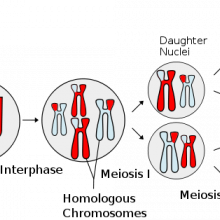
14:21 - Meiotic matchmaking: how cells tell their chromosomes apart
Meiotic matchmaking: how cells tell their chromosomes apart
A way in which each of a pair of chromosomes can identify its opposite equivalent has been unravelled by scientists 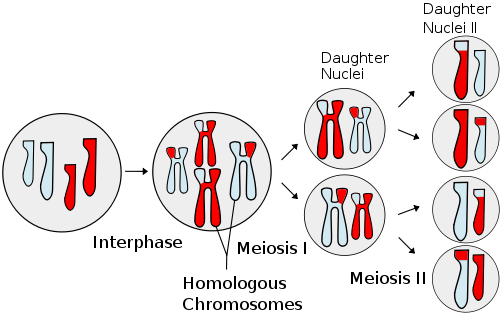 in Japan.
in Japan.
Viable eggs and sperm, known as gametes or germ cells, must contain just one of each of the pairs of chromosomes found in the majority of an organism's cells. This ensures that, when fertilisation takes place and the genetic complements of egg and sperm mix, the resulting embryo contains the correct chromosome count.
For a chromosome, correct identification of your opposite number is also critical to the generation of genetic diversity because, during the process of germ cell production, matching chromosomes exchange whole chunks of their DNA for the corresponding regions in their counterparts.
Yet, despite years of studying dividing cells, scientists still don't know how this recognition is achieved.
Now, using a yeast called Schizosaccharomyces pombe as a convenient model organism, Da-Qiao Ding, from the Advanced ICT Research Institute in Kobe, Japan, has discovered a gene that seems to play a key role in the process.
Known as sme2, it produces a so-called non-coding RNA molecule. This is a string of genetic letters read from the DNA but not used to encode a protein.
Instead, the RNA sequences from both copies of the chromosome first accumulate, probably by associating with an as-yet unidentified protein, to form a dot-like structure in the nucleus.
They then bind to their sites of origin on each chromosome, tethering the two DNA molecules together, side-by-side and in the correct alignment.
To prove that this was the case, the Japanese team tried disrupting the sme2 sequence and noted that the chromosomes ceased to pair properly at this site. Next, they moved the sme2 genetic material to another location on the chromosome and demonstrated that pairing was resumed and drammatically elevated at the new site.
However, whilst compelling, this isn't the whole story, as researcher Abby Dernberg, who is doing similar work on C. elegans nematodes and contributed a commentary on the work published this week in Science, points out.
"I don't think the process depends upon one single mechanism. But this work by Ding and her colleagues using S. pombe yeast is really important in shedding light on what was previously a totally grey area; it will help to motivate experiments in other model organisms and help to clarify the role on RNA in the process of [chromosome] recombination."
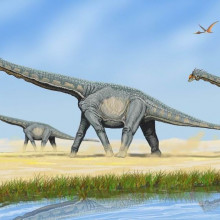
16:32 - Detecting Virus Pathology, the Rewards of Self-Disclosure and Flatulent Dinosaurs
Detecting Virus Pathology, the Rewards of Self-Disclosure and Flatulent Dinosaurs
Julian Hiscox, University of Leeds; Hartmut Hellmer, Alfred Wegener Institute for Polar and Marine Research; Diana Tamir, Harvard University; David Wilkinson, Liverpool John Moore's University
Detecting the Disease Potential of a virus
The severity of a virus and it's effects on the body could soon be predicted using a new technique developed by scientists at the University if Leeds and published in the journal proteomics.
Julian Hiscox and colleagues are developing a barcode system where thousands of proteins within a cell infected by a virus can be analysed at once to identify any changes in the balance of these proteins and predict the pathogenic potential of the virus on the body.
The types and levels of proteins affected by infection varies between viruses allowing the team to determine a unique barcode for each type, with the effects of influenza and human respiratory syncytial virus already identified.

Julian - A cell can be seen as a battle ground for virus infection. So, you've got the virus coming in on the one hand trying to destroy the cell and make more virus and then the cell on the other hand is trying to stop that virus from doing its nasty work. We're able to capture a snapshot of that battle and then work out from the proteins we've studied, whether the battle is going to go in favour of the virus or in favour of the cell. Effectively it allows you to develop a diagnostic tool to work out whether something is going to be of a serious clinical nature or not.
---
Ice Sheet stability in Antarctica
A new weak spot has been identified in the west Antarctic ice sheet which could result in a sea level rise of up to 4mm per year.
Writing in
Nature, Hartmut Hellmer from the Alfred Wegener Institute for Polar and Marine Research modelled air temperatures and ocean currents in the widdel sea, a region of Antarctica previously thought not to affect nearby ice shelves, and found that rising air temperatures and an increase in warm ocean currents flowing in towards the filchner-ronne ice shelf could cause the ice shelf to melt and become more mobile.
Hartmut - What we see is that by the year 2070, the coastal current with temperatures like today will be redirected and enter the Filchner-Ronne Ice Shelf cavity. This will cause an increase in basal melting, this basal melting will reduce the buttressing of the ice shelf. The ice shelf will accelerate and that allows the drainage of more ice from inland. The major implication of this draining of inland ice is sea level rise.
---
Let's talk about Me
Sharing personal thoughts and views with others activates reward centres in the brain, according to scientists at Harvard University.
Working with human volunteers and publishing in the journal
PNAS, Diana Tamir monitored brain activity in participants as they answered questions about their personal opinions as well as the opinions of others. She found that as volunteers spoke about themselves, the brain's nucleus accumbens and ventral tegmental area, which are both associated with reward, became active.
The team also found there was greater reward stimulation when volunteers thought their views would be shared and they also turned down monetary rewards in exchange for talking about themselves rather than others.
Diana - In everyday life, we see that humans engage in self-disclosure. They do this in naturalistic conversation, they do it over the internet. We know already that humans are an inherently social creature and I think this sheds light onto one aspect of our social behaviour which is the way in which we interact with other people. We're highly motivated to share information about ourselves with other people and I think it's kind of the give and take of sharing information about yourself and receiving information from other people that helps us to form social bonds, and to basically engage in a highly social world.
---
Flatulent Dinosaurs
 And Finally, Dinosaurs could have greatly warmed up the planet during their existence, due to their flatulence.
And Finally, Dinosaurs could have greatly warmed up the planet during their existence, due to their flatulence.
David Wilkinson from Liverpool John Moore's University calculated the potential methane output of sauropods - an order of large herbivorous dinosaurs which includes brontosaurus, by scaling up the annual levels of this greenhouse gas currently produced by the digestive tract of cows.
The team estimated the sauropods would have generated 520 million tonnes of methane each year, due to the large populations of microbes living inside them, which would have caused significant warming of the planet.
David - The microbes living in sauropod dinosaurs, another large herbivorous dinosaurs, could've been producing so much methane that it might be having an effect on the way that the actual climate of the planet worked. And this is just an extraordinary idea that little microbes in giant dinosaurs could be having a measurable effect on the workings of the whole planet's climate.
That work was published in the journal
Current Biology.
Related Content
- Previous Why do feet smell cheesy?
- Next Cracking Chronic Fatigue










Comments
Add a comment